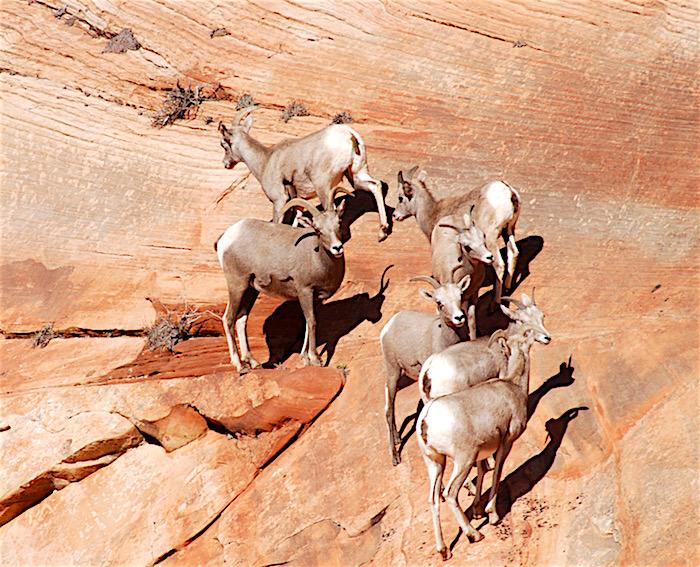
Zion National Park staff are proposing to transplant some of the park's desert bighorn sheep into areas elsewhere in Utah/Kurt Repanshek file
Sometimes, the best way to help wildlife is to spread them out. And that's what Zion National Park officials are proposing to do with some of their desert bighorn sheep.
Under a plan open for public comment through September 25, park officials are proposing to work with the state of Utah to relocate some of the park's bighorns to other locations in the state. The proposal would both help the state enhance its bighorn herds and the park reduce the chance of disease infecting its herds.
Desert bighorn sheep are an iconic animal found at Zion, and catching glimpses of them on the red cliff faces is a sought after part of a trip to the park. However, with reductions in habitat quality and disease across portions of their range, there were no documented sightings of bighorn sheep in the park between 1953 and 1973. In 1973, in cooperation with the Utah Division of Wildlife Resources and other agencies, bighorn sheep were reintroduced to the park. The population grew slowly until about 2008 when a rapid increase in numbers began.
Today, the biggest threat to Zion’s wild bighorn sheep is disease. Without displaying symptoms themselves, domestic sheep and goats can carry strains of Pneumonia catastrophic to bighorn herds. Bighorn are curious about their domestic relatives and will often attempt contact with them, which increases the chance of disease transmission from domestic sheep to wild bighorn sheep. When this happens, fatality rates of up to 90 percent of a bighorn herd can occur, with significantly lower rates of lambing for years to come. With the expansion of the Zion herd, the risk of catastrophic disease had increased.
To mitigate this risk, Zion staff, in collaboration with the Utah Division of Wildlife Resources, propose to transplant desert bighorn sheep to support other parts of the state’s bighorn population, and decrease the risk of disease transmission and potential for large-scale mortality in the Zion herd.
An Environmental Assessment has been prepared to examine the impacts of this proposed strategy. The No Action Alternative describes current management of the sheep, with occasional flights to obtain population estimates, and monitoring of the population. The park’s preferred alternative involves the use of helicopters (including in wilderness) to capture sheep for disease testing, GPS collaring, and periodic transplanting of a proportion of Zion’s sheep herd to areas outside the park with the intention of sustainably managing the herd size, habitat quality, and potential disease issues.
You can find the EA at this website.





